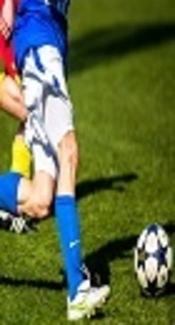Dear Editor,
Playing football is associated with a significant risk of injuries which is higher than many other contact or collision sports (1). Young football players are susceptible to injuries, which will have impacts on their whole athletic life if not end them early. The rate of injuries in higher ages within young players is not different than senior players (2). Considering musculoskeletal injuries, while the most prevalent injuries among male football players are to their ankles, it is not the case in female athletes and knee injuries are more prevalent among them (3). Knee injuries are also the leading musculoskeletal injuries among young female football players (1). Concussions are also fairly prevalent among football players. Accumulative consequences of repetitive concussions in youth football players is a concern.
There have been calls for prevention programs among youth football players targeting coaches (4), training programs (5) and policymakers (1). while there is a considerable amount of evidence regarding young male football players (even a systematic review on it) (6), young female football players have been less of concern of researchers. We recommend more research among young female football players to be performed. Recent studies targeting the evaluation of the previously suggested risk factors of ACL injuries in female football players reported that neither the postural control measures, balance measures (7) nor generalized joint hypermobility are risk factors for ACL injuries in elite female soccer players (8).
Female football is more technical and less physical than male football, this difference requires a different paradigm for prevention programs. Just as an example, Focusing on technical training in female football players can be more effective in preventing injuries than male football players that general physical training for preventing injuries in a fast and contact sport is required. Technical training intervention can be more effective if it is started at grass-roots level, so it highlights the need for interventions for injury prevention among young female players in a younger age than male football players. There is strong evidence supporting the preventive effect of neuromuscular training programs on female football players, especially when implemented in younger ages (9, 10).
When it comes to other aspects of health in young female players such as psychological issues, our knowledge is still lacking (11). A recent study reported that male football players had significantly lower average depression and anxiety scores than female football players. The depression scores were similar to the general population, but male players showed lower anxiety scores in comparison to the general population. While playing football may have a protective role against anxiety in male players, there is no such effect reported for female players (12). Eating disorders are thought to be less common in female football players compared to other sports, but with the increasing number of female players participating in football, we are facing more dieting and eating disorders among female football players (13); although the data, in this case, is still lacking. As this problem is prone to being missed easily and early diagnosis and intervention could easily protect the player’s health from long-term consequences, it is very important to be aware of the problem (14, 15).
